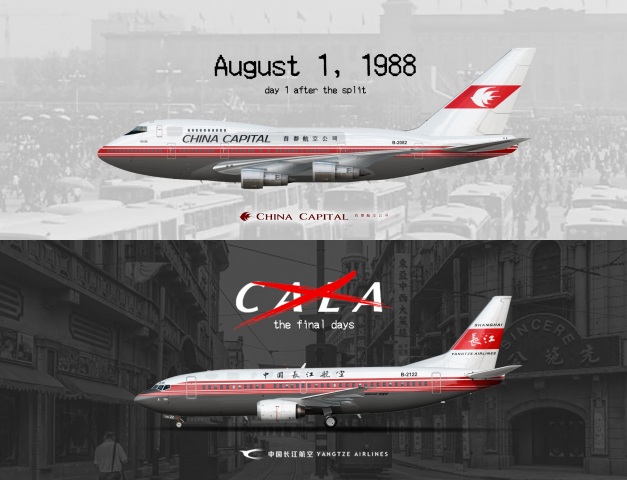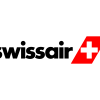
Chapter 2: 737 & 747 (1988)
- Owner: J.C (View all images and albums)
- Uploaded: Jun 06 2023 03:41 AM
- Views: 1,040
- Album CALA: The Final Days

Chapter 2: 1988. Day 1 after the split.
The relationship between CALA's Shanghai and Beijing operating branches continued to deteriorate after the IL-62 affair. The tides seemed to decisively turn against CALA’s Shanghai branch as their funding was continuously cut by headquarters in Beijing. This favoritism had serious impacts on CALA operations, and its once prestigious brand was being degraded by bickering management more interested in outdoing their rival division than providing quality service. The situation was further inflamed for CALA by mounting pressure from Western authorities decrying CALA’s government-sponsored monopoly over Chinese aviation. By the early 80s, Chinese government officials far above the upper echelons of CALA management were paying attention to the divided, struggling, politically divisive air carrier. These officials were not impressed with CALA management and cleaned house.
In 1984, Bai Kai Li was appointed to succeed the conservative Dong Xiao as director general of CALA. Dong had been a party man but his experience running a shoe factory in Lhasa had not adequately prepared him to settle disputes between CALA’s two branches. Bai was a Shanghai native, but studied in the US and received his MBA from Cornell University. He was a proven veteran of the aviation industry but controversial given his ties to the capitalist West. Prior to his appointment to CALA, he had served as the Deputy Chief of Westwind's Asian-Pacific Operations. He had only left the company because he was unhappy fighting Westwind management trying to squeeze more profit out of routes. The top of the Chinese government saw his capitalist thirst as a danger but also an opportunity to bring real change that might make CALA work.
Under Bai, CALA was demoted to a regulatory agency, overseeing safety in the country’s aviation industry. Airline operations would be dissolved and succeeded by two new state-owned but privately-operated companies: Beijing-based China Capital Airlines took over CALA-Beijing's assets and orders for flagship MD-11C and 747 aircraft. Shanghai-based Yangtze Airlines took over CALA-Shanghai's assets and orders for less prestigious MD-11 and 767 aircraft. Bai's plan was formally unveiled in October 1987, with China Capital and Yangtze branding slowly introduced throughout CALA's system to alert passengers of the impending change. On July 31, 1988, B-2082, a Boeing 747SP, operated the final CALA flight, CHINA AIR 88 from Shanghai to Beijing. Overnight, the aircraft was repainted into an interim livery and operated as China Capital’s first flight, CHINA CAPITAL 1, from Beijing to Shanghai the next morning. CAP1 would also be the first-ever flight operated by a Chinese airline other than CALA. Shortly after, B-2122, a Boeing 737-300 painted in Yangtze's own interim livery took off as LONG RIVER 1 from Shanghai to Beijing marking the beginning of Yangtze Airlines’ operations. These would remain the only aircraft in CALA’s former fleet to wear interim liveries, as the rest of the fleet was slowly repainted into the successors’ branding. Hardliners blamed Bai for giving up on China’s future in aviation but more progressively minded politicians saw Bai’s intervention as necessary and genius. In a single stroke, CALA’s two branches went from fighting siblings to competitors in the free market of aviation. Unlike other market liberalizations in China, the entities involved in Bai’s plan were already adversaries and so the transition was buy and large quite smooth.

 Sign In
Sign In Create Account
Create Account















I stan shoe factory managers.
Great story, interesting hybrids.